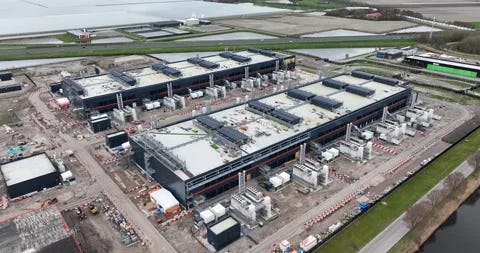Superintelligent Datacenters, Paranoia, and How to Defend Them Without Turning Into a Tin Foil Hat
If you’ve got a giant AI datacenter… congrats. You’ve just painted a massive target on your back.
Time Magazine is now hand-wringing about “datacenter superintelligence”. Because apparently, the real danger isn’t Terminator—it’s clusters of GPUs accidentally discovering fire and deciding to overthrow humanity in between training epochs.
Let’s not get hysterical. No need for bunkers or bunker gear. But let’s not be stupid either. These datacenters are serious assets. They’re running inference for things that matter—healthcare, finance, autonomous drones, maybe even your espresso machine by 2026.
And right now, they’re sitting ducks.
Not because attackers are super-geniuses, but because we keep building our AI stacks like they’ll never fail—and never be attacked. Static, brittle, exposed. All the things you’d never want in a hostile world.
What’s Actually Needed? Security That Knows How to Duck.
Enter AMTD—Automated Moving Target Defense. It's like switching hotels every night so no one knows where you sleep. Except instead of dodging assassins, you're dodging packet sniffers and CVE scavengers.
Then we throw in Trusted Execution Environments (TEEs)—little hardware bunkers where your most sensitive workloads can run without nosy neighbors peeking in, even if the house is already on fire.
Together, they make your infrastructure agile, unpredictable, and much harder to pin down. In other words, just competent enough to survive.
Security Chaos Engineering: The Drill You Keep Skipping
Here’s a fun question: when was the last time your system proved it could survive an attack?
Chaos engineering for security (SCE if you're into acronyms) is about breaking things on purpose. Pull the plug, inject fake malware, simulate rogue admins. Watch what happens. Fix what breaks. Rinse and repeat until you’re bored—or until the system doesn’t fall over.
In old-school ops, chaos engineering is about resilience. In modern AI security, it’s about knowing your defense doesn’t suck.
Source: Alamy Stock Photo, "Aerial view of a large datacenter in Noord Holland, The Netherlands"
The Combo Platter: AMTD + TEE + Controlled Chaos
Let’s say you’ve got a datacenter running AI inference at scale. Here’s how you make it less of a sitting duck and more of a moving target:
AMTD rotates containers, services, or IPs. It keeps the system unpredictable. Your attack surface isn’t just hardened—it moves.
TEEs protect the payload. Even if someone breaks in, they see static. They can’t decrypt model weights, API keys, or your crown jewels.
Security chaos engineering acts like the drill sergeant. It breaks things and makes sure your AMTD-TEE dream team doesn’t fall apart when the lights flicker.
You’re not making it invincible. You’re making it annoying to attack and expensive to exploit. That’s often enough.
Does It Melt Latency? Short Answer: No.
Let’s kill a myth right here: this doesn’t turn your inference engine into a sloth.
AMTD can be event-driven. You don’t rotate every five minutes like a caffeinated DevOps intern. You rotate on signals—like CPU spikes, idle thresholds, or Prometheus alerts.
TEEs are fast enough for most workloads. Yes, there’s some overhead. But you’re not doing deep learning training inside an enclave. You’re protecting the execution of model inference and secrets. Small. Fast. Surgical.
Containers restart in seconds. If you build them right—tiny, single-purpose, ephemeral—you can rotate in and out without even blinking.
You don’t need a sledgehammer. You need a switchblade.
So What’s the Playbook?
Containerize like you mean it. Break things down into small, disposable, and traceable units.
Deploy on TEE-enabled hardware. Intel SGX, AMD SEV, or whatever acronym gets the job done.
Instrument with metrics. Prometheus, Grafana, whatever helps you smell smoke before the fire.
Set AMTD rules based on real-world triggers. Don’t rotate blindly—rotate when there’s a reason.
Simulate failure regularly. If your system breaks during a chaos test, thank it. At least it didn’t break in production first.
Final Thought: This Isn’t About Superintelligence. It’s About Basic Competence.
Forget Skynet. Most attacks don’t come from AI overlords. They come from interns reusing passwords or misconfigured S3 buckets.
If your datacenter’s going to be a fortress of modern AI—treat it like one. Harden the gates. Keep the guards on the move. And maybe, just maybe, stop pretending that static infrastructure is ever secure.
Chaos is coming. Might as well make it your ally.
Further Reading:
Security Chaos Engineering: Sustaining Resilience in Software and Systems
A comprehensive guide by Kelly Shortridge and Aaron Rinehart that delves into applying chaos engineering principles to security, emphasizing the importance of proactive resilience testing.
Trusted Execution Environments by Carlton Shepherd and Konstantinos Markantonakis
This book offers an in-depth exploration of TEE technologies, including Intel SGX and ARM TrustZone, discussing their architectures, applications, and security considerationsConfidential Space reaches GA, now ready for everyone to use by Rene Kolga and Nelly Porter
An announcement from Google Cloud introducing Confidential Space, a TEE-based solution designed for privacy-preserving collaboration and secure data processing.



